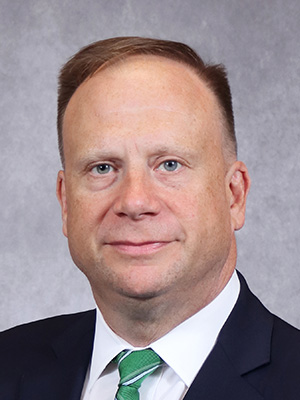 Two complementary notions reside in the heart of our educational mission, and we must embrace them both.
Two complementary notions reside in the heart of our educational mission, and we must embrace them both.
At this year’s Student Success Launch, I briefly discussed how our work to promote student success has increasingly come to be organized around what I described as the “retention/persistence distinction.” This conception emerged out of a conversation that I had years ago with Bethan Cantwell, MSU’s Assistant Provost for Institutional Research. In clarifying the technical differences between the two terms, Bethan said, “the institution retains students, and students persist.”
As we have operationalized MSU’s redefinition of student success as “the measure of an institution’s ability to support all its students to learn, thrive, and graduate,” the retention/persistence distinction has come to occupy a central role in our work. This is because our conception of student success acknowledges that MSU is responsible for providing the students we admit with the support they need to be successful. That does not relieve students of their responsibilities, but it acknowledges that we cannot simply wish our students to be different than they are. We welcomed their applications, invited them to campus, accepted their deposits, and matriculated them. Now, we need to ensure that we provide a welcoming, inclusive, and supportive environment so that they can do the one thing that every student starts college wanting to do: graduate.
The persistence/retention difference also guides us in the organization and accomplishment of our work. Retention work focuses on improving the institution’s abilities to support its students, and persistence work focuses on improving individual students’ abilities to be successful at the institution. We sometimes talk about our duties to straighten the tracks (retention work) while we keep the trains running (persistence work). Other times we describe the institution as the intended subject of improvement for retention work and students as the intended subject of improvement for persistence work. For both persistence and retention efforts, the ultimate goal is the closing of opportunity gaps and the increase in persistence and graduation rates for all students.
When I first heard Bethan’s definitions of retention and persistence, I imagined an institution that was so good at meeting its students’ needs that one day persistence efforts would be unnecessary. That is, I imagined an institution so good at retaining all its students that it did not need to support individual students to be successful. I imagined retention reform efforts as working toward the goal of eliminating the need for persistence work. I have since learned that this is an impossibly utopian vision for our work; our students and their needs are forever changing, and so there will never be a perfectly designed and operating institution. We will always need to be doing both retention and persistence work.
But retention and persistence efforts are not Sisyphean tasks. Improving ourselves, our university, and our students is both the means and the end. It is precisely the work we have taken up. As Camus instructs us, “The struggle itself toward the heights” is enough to fill our hearts. “One must imagine Sisyphus happy.”
Feedback and suggestions, especially from the MSU community, welcome at largent@msu.edu.